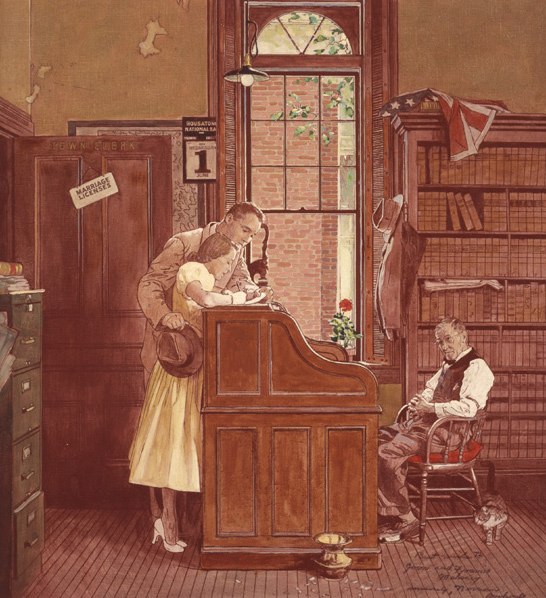Jason Braman, a Stockbridge, Massachusetts resident, served as the model for the town clerk at the urging of his son and daughter-in-law, Dave and Anne. Learn more about Mr. Braman's modeling for Marriage License from Anne Braman in the video interview below. The late Ms. Braman posed as the beloved teacher in Happy Birthday Miss Jones, Rockwell's March 17, 1956 cover for the Post.

Click here to view the work while you are listening to the audio.
Set in the town clerk's office just footsteps away from Rockwell's first Stockbridge studio on Main Street, Marriage License captures Rockwell's fascination with the somber wood-paneled interiors of his favorite seventeenth-century Dutch painters. Indeed, the building itself is fashioned after one pictured in Jan Vermeer's A Street in Delft. In keeping with the older style, Rockwell replaced an existing metal file cabinet in the left foreground with an old railroad station stove. His model for the town clerk had recently lost his wife, and the authenticity of his feelings adds power to the poignancy in this study of youth and old age.
